Overview
As we approach the close of 2023, we are excited to unveil our final release of the year: Automatic Diversion Routes (ADR) - a new intelligent diversion planning engine for our Traffic Management module. After some rigorous beta-testing, we're thrilled to be launching this for all our Traffic Management customers at no extra cost.
Picture this: you're in Traffic Management Step 2 planning a road closure, and voila! You're automatically presented with a list of the best possible diversion routes to choose from. It doesn't stop there - ADR factors in everything from road class and planned roadworks, to schools, bridges, weight restrictions and more, showing you all potential Diversion Risks that may impact your choice.
How does it work?
Step 1: Plot your road closure
Begin by plotting your road closure in Step 2 of Traffic Management as normal. Select the start and end points of the closure by clicking on the map. Be sure to specify the dates for the closure too.*
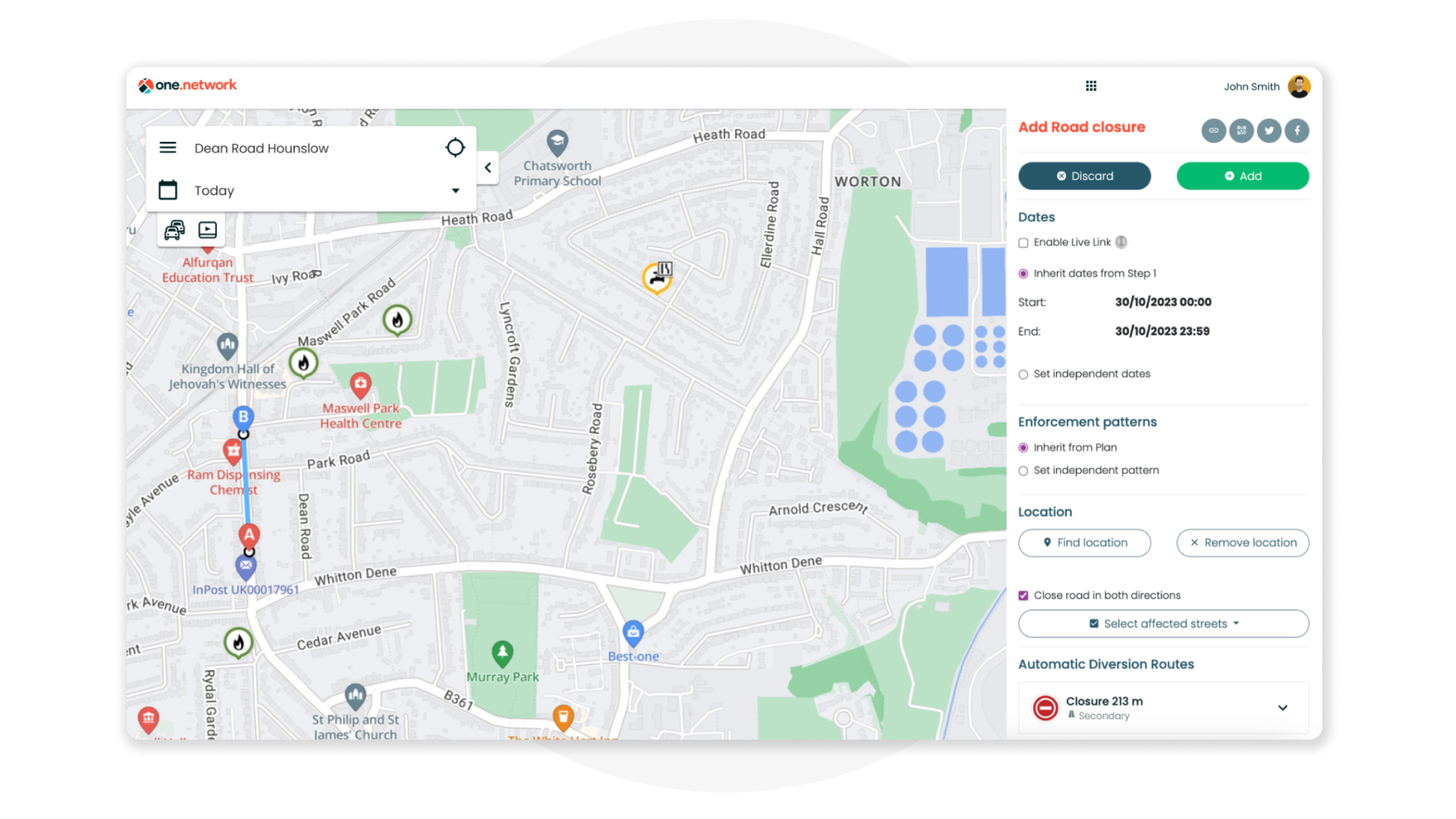
Step 2: Review your ADR options
After the closure is plotted, the ADR engine will suggest route options that will appear beneath the closure, in order of most to least optimal. Click on each option to view all the associated Diversion Risks both in an expanded list and highlighted on the map. You can also hover over each option to see the corresponding ADR geometry on the map.
When presenting options, the ADR engine takes various factors into consideration:
- The start and end points of the closure.
- The start and end dates of the closure.
- The road class of the closure. The engine pulls road class information from Open Street Map so that it can prioritise diversion route options that match the road class of the closure. Where that is not possible, ADR will prefer diversion routes on higher classed roads.
- Diversion Risks such as:
- Bridge and lane height/weight/width restrictions.
- Schools, hospitals, level crossings and fire stations.
- Road events like roadworks, closures, public events, incidents and any corresponding traffic management restrictions.
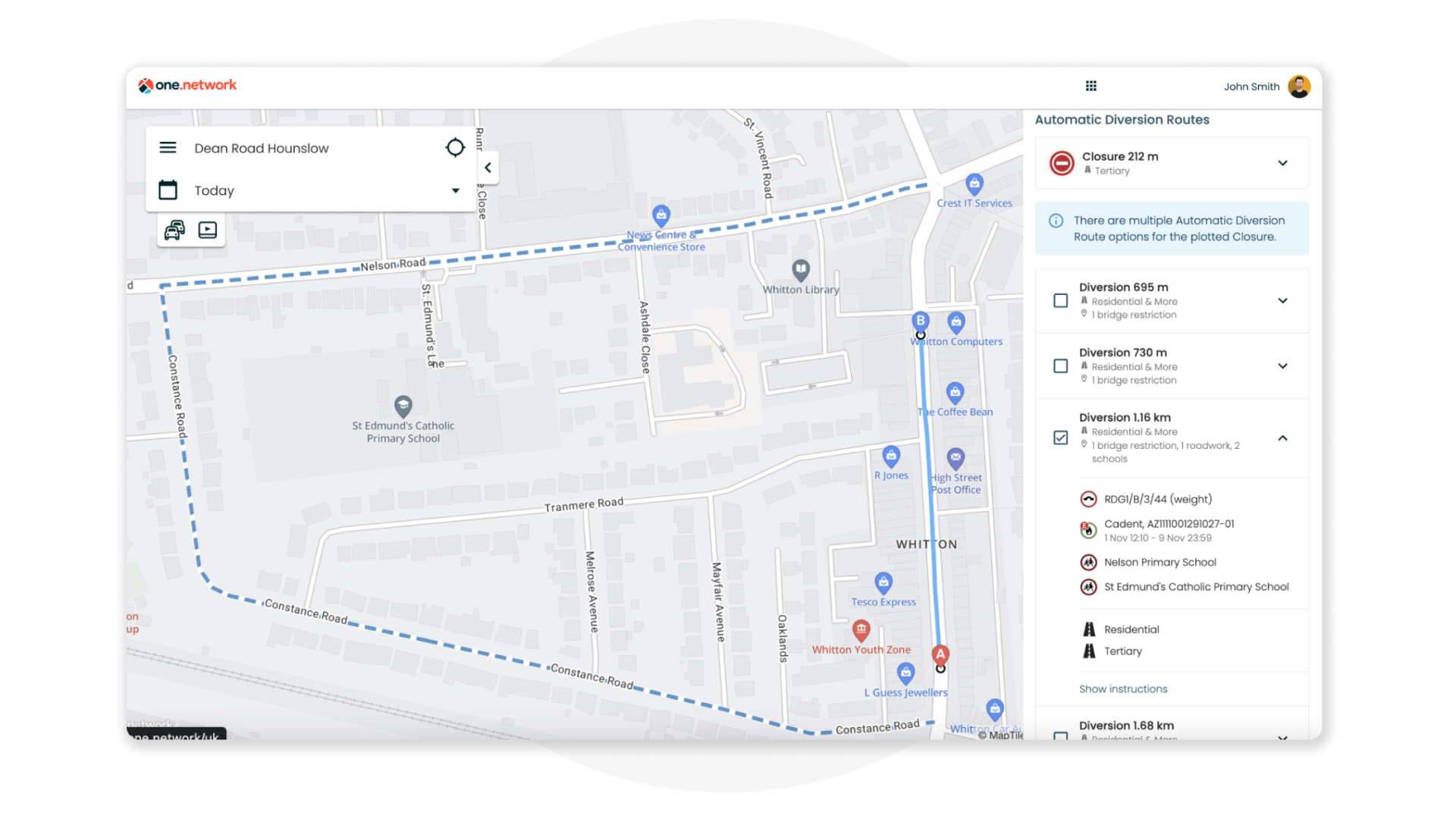
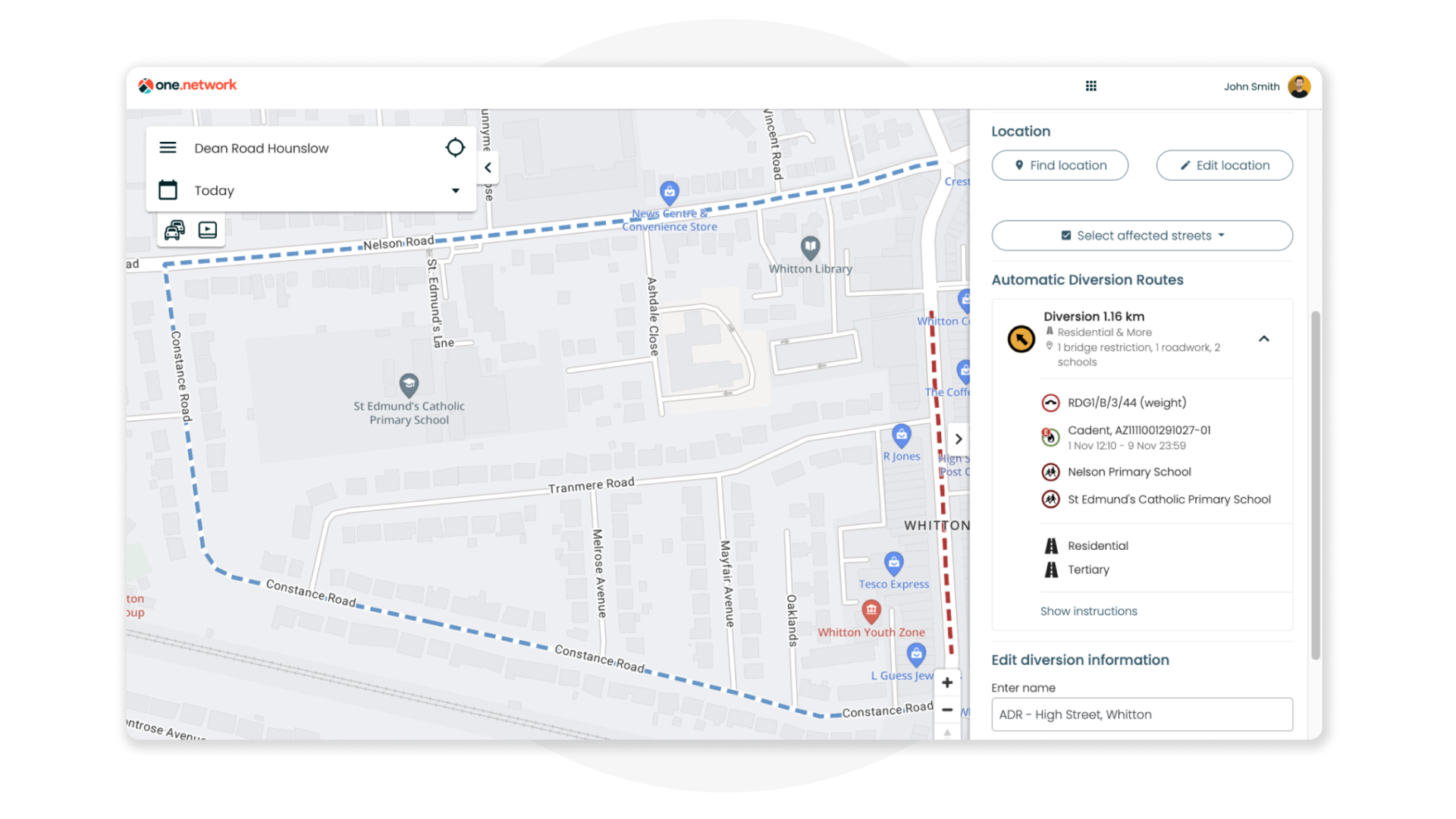
Step 3: Select and save your ADR
Decide which ADR you'd like to use and click "Save." The closure and ADR will now be displayed as separate items in Step 2 of Traffic Management.
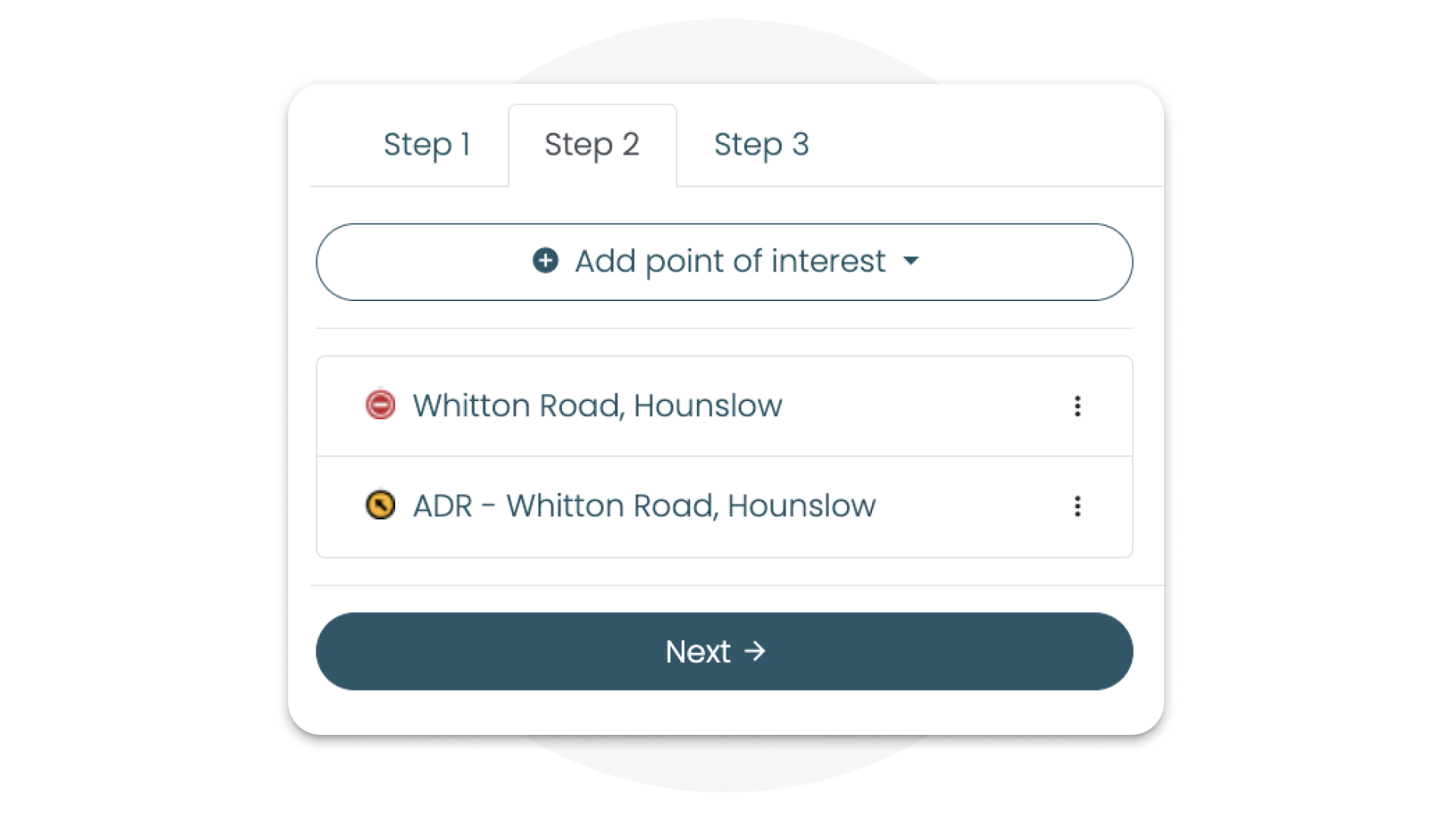
Viewing and Editing your Selected ADR
You can go back to view the diversion route selected at any time and will still be able to see the list of Diversion Risks.
Additionally, you can click "Update" to edit the diversion route but please bear in mind that doing this will convert the ADR to a normal diversion route and thus, Diversion Risks will now longer be visible.
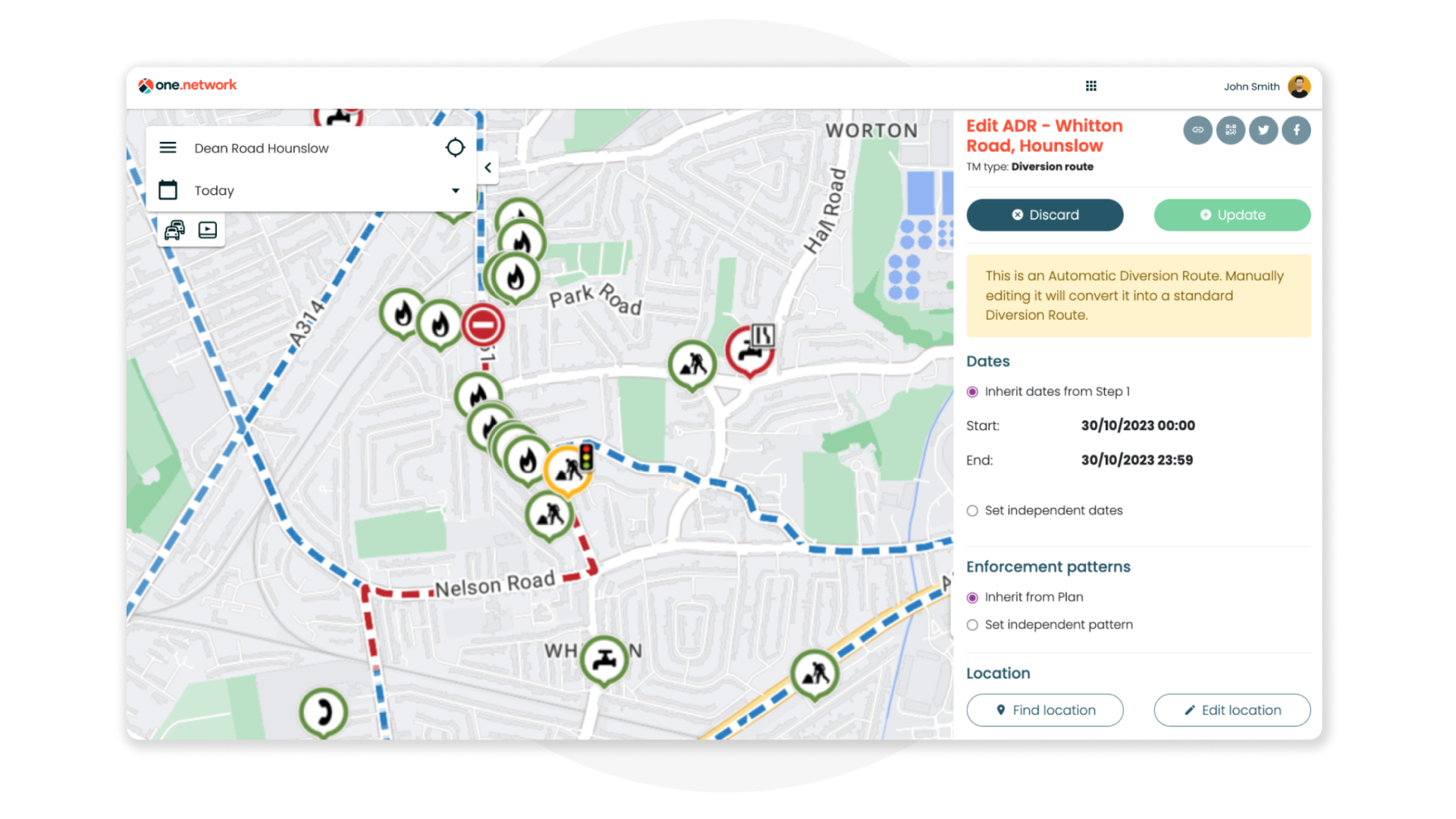
*Please note that ADR generates diversion routes that start from Point A and end at Point B. If you require a diversion route to function in both directions, you will need to plot a separate one-way closure for each direction.
What benefits has ADR unlocked for our highway authority and utility beta testers?
ADR makes the planning process simpler and faster, whether you're a highway authority, utility or third party contractor.
Highway authorities can use ADR to reduce time spent plotting diversion routes for their own closures, as well as reviewing and improving those submitted in permit applications from utility companies. ADR enhances awareness of potential Diversion Risks on the network, helping authorities to select optimal diversion routes that limit congestion and minimise journey times.
Lincolnshire County Council (LCC) have been testing ADR throughout 2023 for both planned and emergency closures. With journey time and carbon reduction targets at the centre of its Local Transport Plan, LCC's primary focus is keeping drivers on the best routes possible to ensure optimal traffic flow.
As the third largest highway authority in England, LCC plotted a whopping 2300 diversions on one.network in 2022/2023 and expect to create over 2500 in 2024. By using ADR, the Street Works team have reduced planning time from 4.5 minutes to just 2.5 minutes per diversion, resulting in an annual saving of 13 working days per year and a 45% reduction in staff time.
Ashley Behan, Street Works and Permitting Manager said:
"ADR has significantly expedited the planning and plotting of closures for us at Lincolnshire. It's particularly beneficial for processing emergency applications from utilities. We can swiftly assess the proposed routes on the plans without the need for manual checks for factors such as weight limits and restrictions. Having used ADR over an extended period, we now have utmost confidence in its accuracy, and we opt for the top suggested diversion route 90% of the time."
ADR is equally valuable for utility companies and contractors. It helps speed up the planning process, providing quick and easy access to intelligently considered ADR options. This decreases the need for plans to be amended by highway authorities, thereby minimising potential delays to repairs.The time savings unlocked with ADR also enable teams to plan closures and diversions in-house, limiting the need to out-source applications to third parties. This, in turn, saves additional time by reducing delays brought about by back and forth communication.
A large utility company also took part in our beta testing phase, using ADR to create emergency diversion plans and has reported impressive results.
Previously, our utility beta tester's emergency closure planning process was manual and time-consuming. It took up to four days to get plans created and submitted to the highway authority, by which time workers would already be on-site working to fix the issue. Now, with ADR, the utility can create their closure and diversion plans digitally and often in less than 5 minutes, ensuring the highway authority receives the application in a timely manner.
They told us:
"ADR makes creating emergency applications so simple and reduces delays. We can now quickly generate detailed closure and diversion plans digitally and submit these directly to the highway authorities. It's significantly boosted our efficiency: 95% of the diversions we submit are now accepted first time."
Where you can learn more about ADR?
- Watch our new ADR training video here!
- Sign up for one of our live, online training sessions.
- If you have further questions, you can email us at support@one.network.